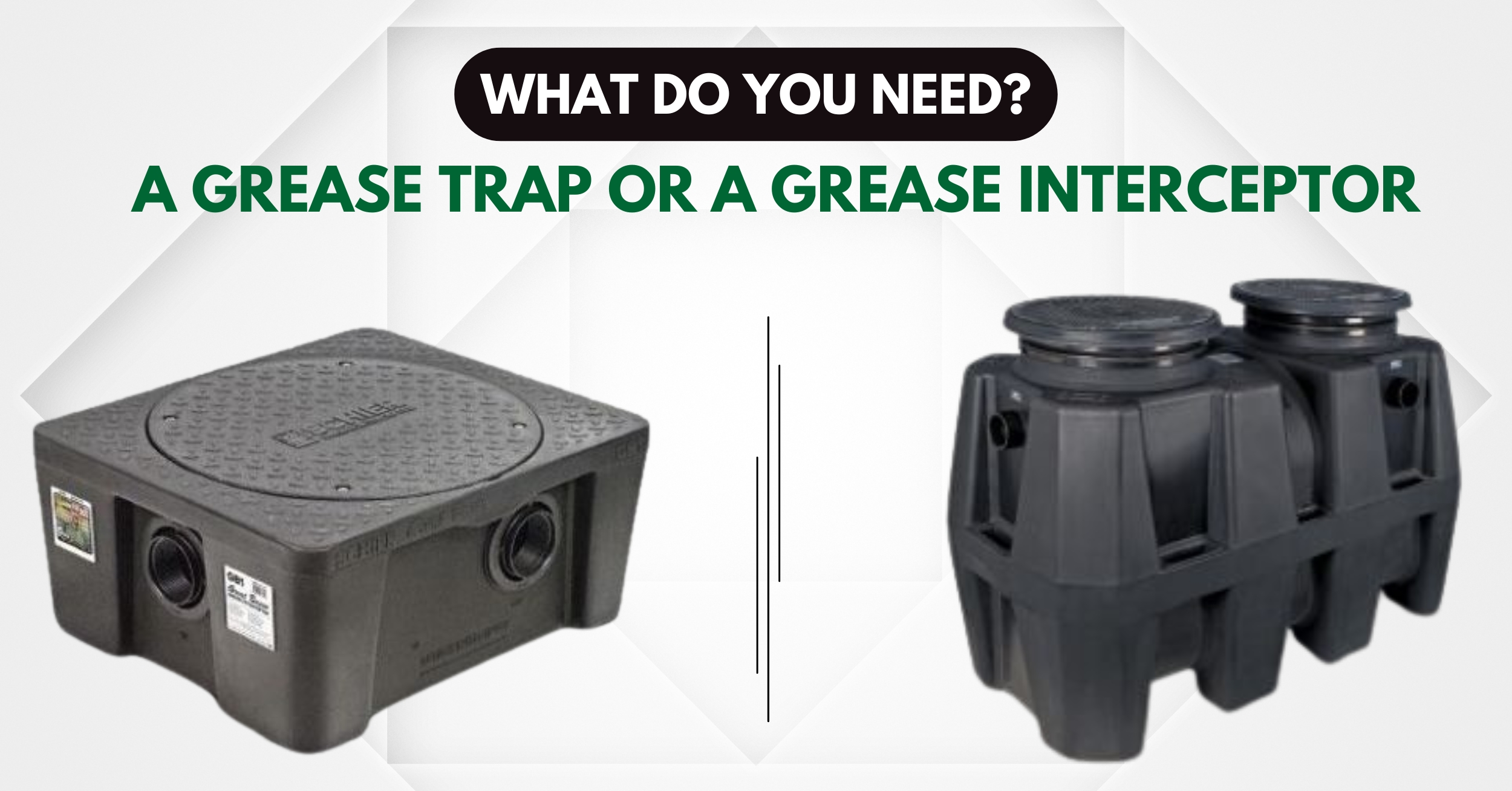What do you Need? A Grease Trap or a Grease Interceptor

When it comes to managing grease in commercial kitchens, choosing the right equipment is crucial. Both grease traps and grease interceptors play a vital role in preventing grease buildup in plumbing systems and protecting the environment. But which one is right for your establishment? Let's break down the differences between the two and help you make an informed decision.
What is a Grease Trap?
Grease traps, also known as grease separators or grease recovery devices, are small, passive devices typically installed beneath kitchen sinks or dishwashers
They work by slowing down the flow of wastewater, allowing fats, oils, and grease (FOG) to cool and solidify, while allowing water to pass through.
Grease traps are designed for smaller-scale operations and have limited capacity, making them suitable for low to moderate grease production.
What is a Grease Interceptor?
Grease interceptors, on the other hand, are larger and more robust systems designed to handle higher volumes of grease.
They are typically installed underground or outside the facility and are connected to the kitchen's wastewater drainage system.
Grease interceptors use a series of baffles to trap and separate grease from wastewater before it enters the sewer system.
These systems are suitable for high-volume kitchens such as restaurants, hotels, and large-scale food processing facilities.
Capacity and Maintenance:
- Grease traps have limited capacity and require more frequent maintenance, often needing to be emptied weekly or bi-weekly, depending on usage.
- Grease interceptors have larger capacities and can typically go longer between cleanings, ranging from monthly to quarterly maintenance schedules.
Installation and Space Requirements:
- Grease traps are compact and can be installed directly beneath sinks or dishwashers, making them ideal for smaller kitchens with limited space.
- Grease interceptors require more space and may need to be installed underground or outside the building, which can be more complex and costly.
Compliance and Regulations:
- Both grease traps and grease interceptors are subject to local regulations and ordinances aimed at preventing FOG from entering the sewage system.
- Compliance requirements may dictate the size and type of grease management system required based on the establishment's volume of grease production.
Conclusion:
Both grease traps and grease interceptors are essential components of any commercial kitchen's plumbing system. Choosing the right one depends on factors such as the size of your establishment, grease production, and local regulations. If you're unsure which option is best for your kitchen, consult with a professional plumber or grease management specialist to ensure compliance and optimal performance.
For high-quality grease traps and grease interceptors, explore our range of grease traps and interceptors designed to meet your kitchen needs.

